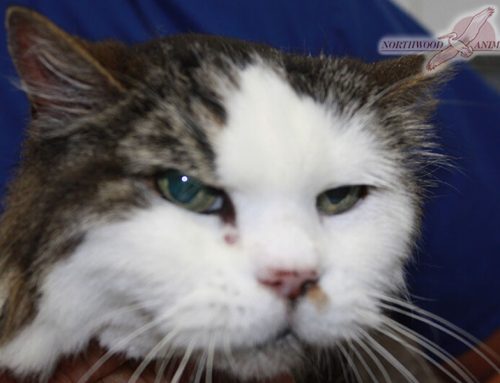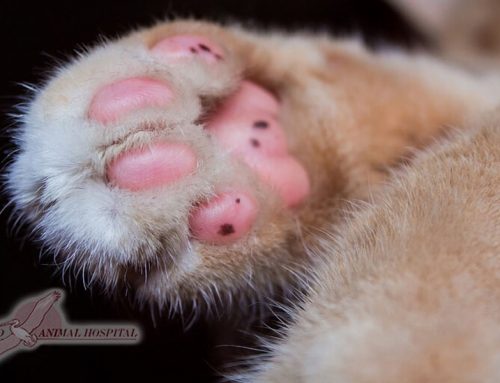Information And Services To Spay And Neuter Cats
Since 1986, the dedicated and compassionate veterinary team at Northwood Animal Hospital have successfully performed spay and neuter procedures on many male and female cats of all breeds and ages. We have also helped educate cat owners throughout CA about spay and neuter procedures. These include when to spay or neuter a cat, what to expect during and after surgery, and why cat spaying and cat neutering is essential to helping control the pet population problem in the state of CA.
We strongly believe that responsible cat ownership is synonymous with spay and neuter procedures. Therefore we have compiled some of the most frequently asked questions here to help you learn more about this important service.
What Is Cat Neutering?
Cat neutering refers to the castration, or the removal of the testicles of a male cat so that he cannot impregnate a female cat. Only a veterinary surgeon can properly and safely perform cat neutering surgery.
Cat neutering surgery includes the following procedures:
- Your veterinarian will use general anesthesia for the procedure to avoid any discomfort felt by the cat
- The attending staff monitors his breathing, heart rate, oxygen levels, blood pressure, plane of anesthesia, and overall health during the anesthetic procedure
- The surgeon makes a small incision in the front of the scrotum
- Each testicle is removed and the blood supply and vas deferens (spermatic cord) are tied off
- The veterinarian closes the incision with surgical glue or sutures
Although cat neutering could result in some discomfort right after surgery, your veterinarian will take various measures for pain relief. Additional steps taken at home will facilitate a safe and comfortable recovery including:
- Providing your cat with a quiet place to recover indoors and away from other animals
- Keep your cat indoors and attempt to limit running and jumping
- Preventing your cat from licking the incision site, which may cause infection, by monitoring your cat and utilizing an E-collar if licking can not be prevented otherwise
- Checking the incision site daily to confirm proper healing
- Looking for any redness, swelling or discharge at the surgery site, or if the incision is open, contacting your veterinarian. Also, calling your veterinarian if your cat is lethargic, has a decreased appetite, is vomiting, and has diarrhea, or if you have any other concerns following surgery
What Is Spaying A Cat?
Spaying a cat refers to the ovariohysterectomy, or the removal of portions of the reproductive system of a female cat so she cannot get pregnant and give birth to kittens. Cat spaying is a surgical procedure that a veterinary surgeon can properly and safely perform. Spaying a cat is a very routine surgical procedure, and it carries a minimal risk for serious medical complications.
Spaying a cat includes the following procedures:
- Your veterinarian will utilize general anesthesia to avoid any discomfort during the procedure
- The attending staff monitors your cat’s breathing, heart rate, oxygen levels, blood pressure, plane of anesthesia, and overall health during the anesthetic procedure
- The surgeon makes a small incision in your cat’s abdomen and removes the ovaries, fallopian tubes and uterus
- Your veterinarian closes the incision with sutures
If you are concerned about spaying your cat, we urge you to ask the veterinarian at your next visit for help making an informed and responsible decision.
Why Should You Spay Or Neuter Your Cat?
There are many valid reasons to spay or neuter your cat. According to AmericanHumane.org approximately 3.7 million animals are euthanized at shelters annually because there just are not enough willing and able adopters for them. Spay and neuter procedures ensure that you are not adding to this number, and that no offspring your cat has ends up a fatal statistic.
To support this unpleasant reality, consider the fact that, according to Feral Cat Project, a non-spayed female cat can be responsible for producing up to 100 other cats throughout her lifetime, including the litters of kittens her un-spayed kittens will eventually go on to have. This incredible number can be prevented though, simply by caring enough to spay or neuter your cat.
When Should You Neuter A Cat?
We recommend spaying and neutering between 4-6 months of age. In some cases, male cats can become sexually mature before 6 months of age, which means waiting to neuter a cat can cause accidental pregnancy. Also, kittens tend to be more resilient to minor surgical procedures than adult cats. Therefore, undertaking cat neutering surgery sooner rather than later helps ensure minimized risk and quicker recovery time. If you are not sure when to neuter a cat, please consult the veterinarian at your next visit.
Make Your Appointment To Spay Or Neuter Your Cat Today
Scheduling an appointment with our veterinary team for spay and neuter procedures is as easy as picking up the phone, or sending us an email. Our experienced spay and neuter staff is here to help answer any questions or quell any concerns you might have, as well as to help schedule a surgical appointment for your feline friend at our spay and neuter clinic.






Leave A Comment